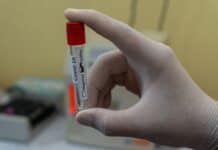 A best practices checklist for planners to help ensure attendee safety and avoid liability.
A best practices checklist for planners to help ensure attendee safety and avoid liability.
As planners move forward with live events, best practices are more essential than ever. What can be done to help ensure attendee safety in the face of COVID and other infectious diseases, and how can planners limit their liability? These were two key questions for Amanda Schleede, CEO of Attend Safe, from attendees at Prevue’s Duty of Care Webinar. Her top tips:
It’s crucial to take steps to avoid liability. “There are many lawsuits now in the courts from the families of essential workers in manufacturing jobs who were exposed to COVID and died,” said Schleede. While outbreaks have lessened, there are still serious cases and it’s likely that there will be COVID positive individuals at any given event, she noted. “My best advice is to be sure to do something to avoid liability. There’s a range from the bare minimum to everything possible.”
Requiring attendees to sign waivers is one option. Many companies are requiring waivers from attendees saying they take full responsibility for attending an event, including the potential of getting exposed to COVID. However, planners need to know the local laws—state or international—to guarantee that the waiver provides liability coverage, Schleede cautioned. She suggests using California laws as a template for meetings in the US, because they are the most restrictive in the country.
Pre-meeting clinical level testing is important. For best practices, “require that attendees get tested at least 24 hours prior to the meeting,” said Schleede. “It can’t be the honor system. There needs to be a way for people to verify and report their test results before getting the green light to leave their home and go to the airport.” Clinically administered tests are the route to go for event pre-testing, she said. “At home test kits are less effective than clinically administered rapid tests, and PCR tests are the most effective.”
For risk mitigation, provide onsite testing. The newest COVID variant doesn’t always test positive early on. “If someone has symptoms, even at the start of the meeting, we give them a mask and have them come back to test the next day,” said Schleede. “We explain that even if they tested negative, the antibodies and virus take time to build up and be detectable.” It’s critical, she said, to have clinically administered tests on site to get accurate samples—either rapid antigen or PCR. “PCR testing is a lot more available than it was early on in the pandemic,” she noted, “and now we have the ability to do it onsite.” Nicknamed rapid PCR, this test delivers a result in 30 minutes. “It qualifies for international attendees who may still be required to get tested before they go home.”
Most important for planners’ duty of care best practices, said Schleede, is to be able to show a laser focus on keeping attendees healthy and safe.
You May Also Be Interested In . . .
COVID Duty of Care Part 1: Foodservice
Do Planners Need to Worry About Monkeypox?
Testing is Key for Duty of Care at Meetings










